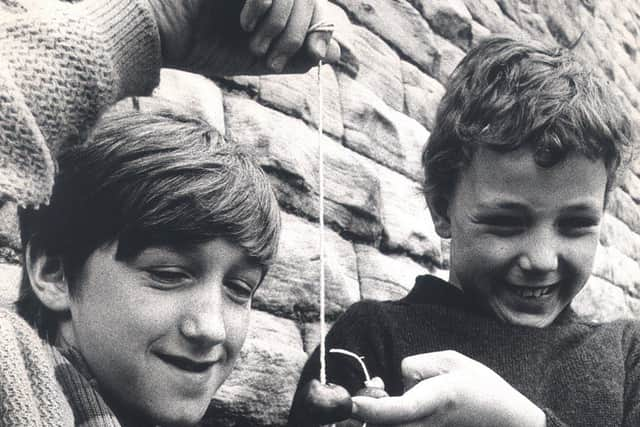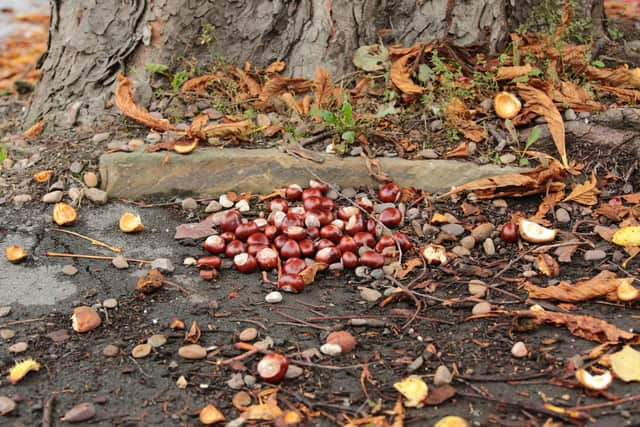Back in the day when conkers were king of Sheffield playgrounds
and live on Freeview channel 276
My old neighbour Wendy swore by their value as a spider repellent, and would have several placed on her windowsills in her home, at this time of year.
Therefore my wife who also has fear of spiders adopted the process. I’ve never got to know whether this is a successful or not.
Advertisement
Hide AdAdvertisement
Hide AdI live in a part of Sheffield which 50 years ago was in Derbyshire, so I’m not sure if this is a Derbyshire thing or not, as I’d never heard of it until we moved here in the 90s.


The science behind it is not that in depth – I don’t think, although pupils of Roselyon Primary School in Cornwall won a prize from the Royal Society of Chemistry in 2010 for their informal study showing that spiders were unphased by conkers.
This reminded me of when going on trips through the countryside, my wife would try to predict the weather, by noting whether the cows were standing or sitting - sitting indicated rain I think, standing not.
I would always argue that Governments, the military and meteorologists spend millions on predicting the weather, when all they needed to do was buy a cow. It never went down well.
Advertisement
Hide AdAdvertisement
Hide AdKeeping spiders at bay may not be the only use for conkers which is in decline.


As I walked through a part of Heeley I came upon a pile of conkers. In my youth this would have never happened, in the 60s and 70s conkers were a real commodity, stray conkers would never be left on the ground, they’d be quickly found and placed on string, and prepared for the very important battles which would take place in school yards up and down the country.
As an inner city kid getting conkers was quite difficult, as horse chestnut trees were difficult to come by, then harvesting the conkers was just as difficult.
These trees were never easy to climb, as they rarely had low hanging branches. So all manner of missiles would be used to dislodge our quarry.
Advertisement
Hide AdAdvertisement
Hide AdThis also explained Newton's law on gravity to us better than any classroom – what goes up must come down. If you waited for them to come down naturally you’d never see them as someone would always get there before you.
I vividly remember my friend Richard would come back from a holiday in Skegness, with a holdall full of conkers. I remember a scene reminiscent of the gold rush when he appeared in the school yard.
He sold them for 1p each making a massive killing, considering average daily pocket money was around five pence a day.
In the current era conkering has declined considerably. Many schools have banned them altogether, with headteachers afraid of the legal consequences, if children were injured while playing, or conkers being used as weapons.
Piles of conkers may become more commonplace as conker fights and employment as spiders repellents seem to be on the wane.